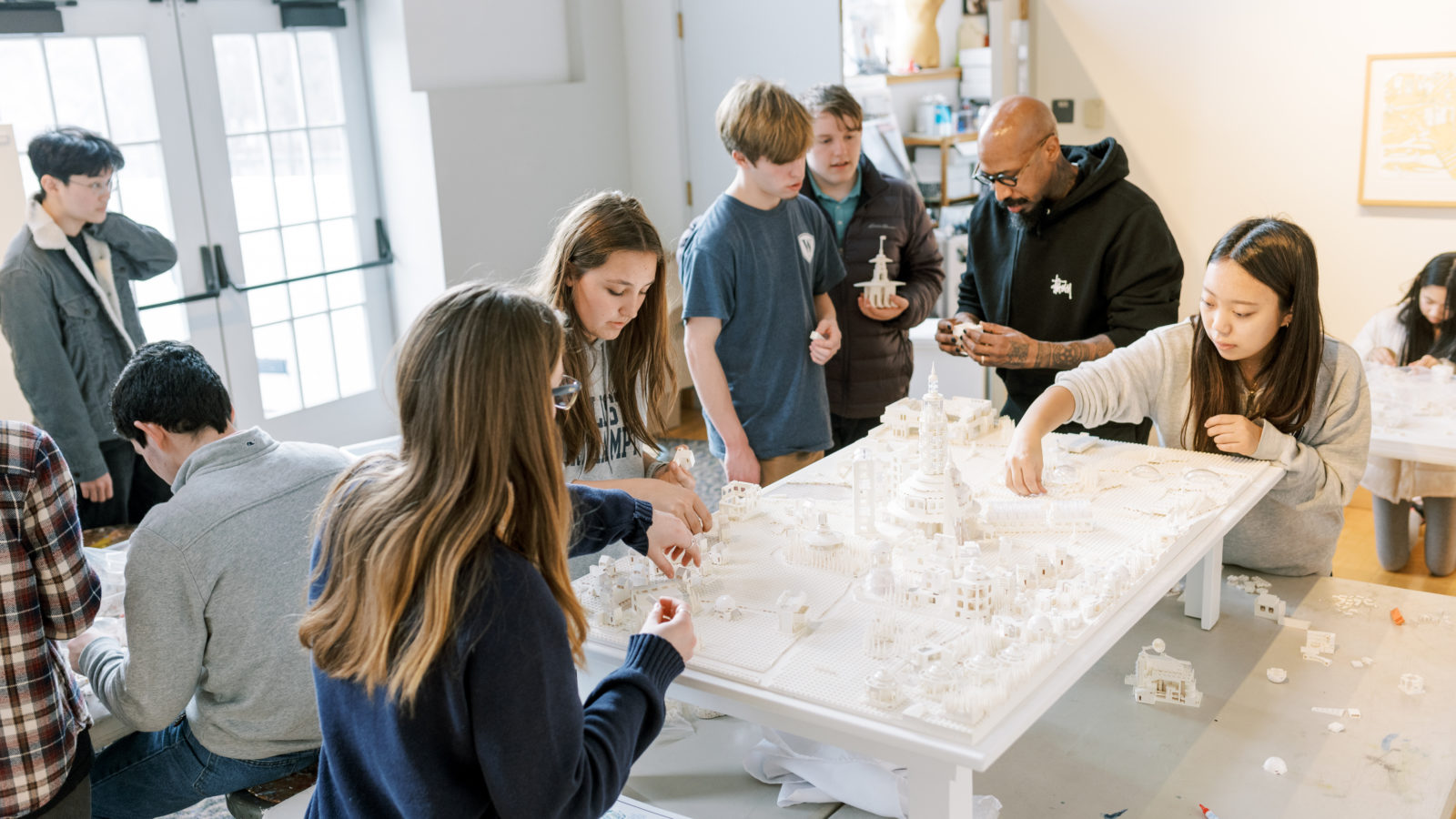The Grum Project has brought a wide swath of artists, musicians, dancers, and more to the Williston Northampton School since it began in 2016. For the latest Grum Project visiting artist, the campus was propelled 1,000 years into the future.
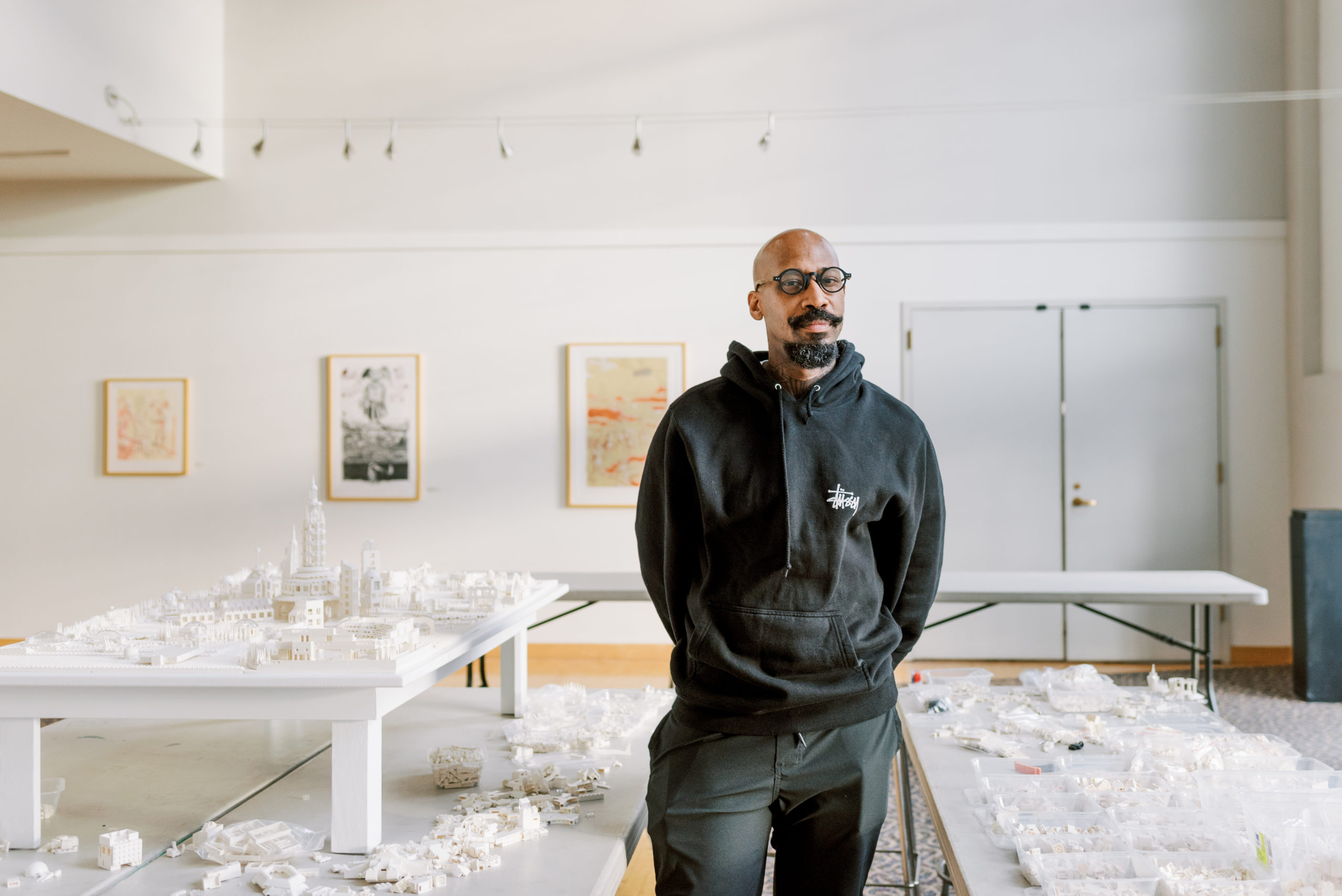
Ekow Nimako, a Toronto-based visual artist, came to Easthampton for four days in January to work with students in both the Middle School and Upper School on projects using LEGO elements. His showcase piece—and gift to the school—was a 4-foot-by-6-foot LEGO creation depicting how campus could look in 3023 CE.
“It’s a message of hope for the future and legacy,” Nimako said of the LEGO piece, which was created in tandem with students. “The hope is that down the line, in thinking about 1,000 years, that the institution will still exist, but what will it become? What will become of this society that we’re living in and how will that impact the community?”
The piece, made entirely of white LEGO elements, is centered around a spire in the middle of the futuristic campus. The grid features streets—which Nimako engraved with the actual road names surrounding campus—and some distinct elements of the campus currently, like the Williston Pond. The rest, though, is all crafted from repurposed LEGO bricks.
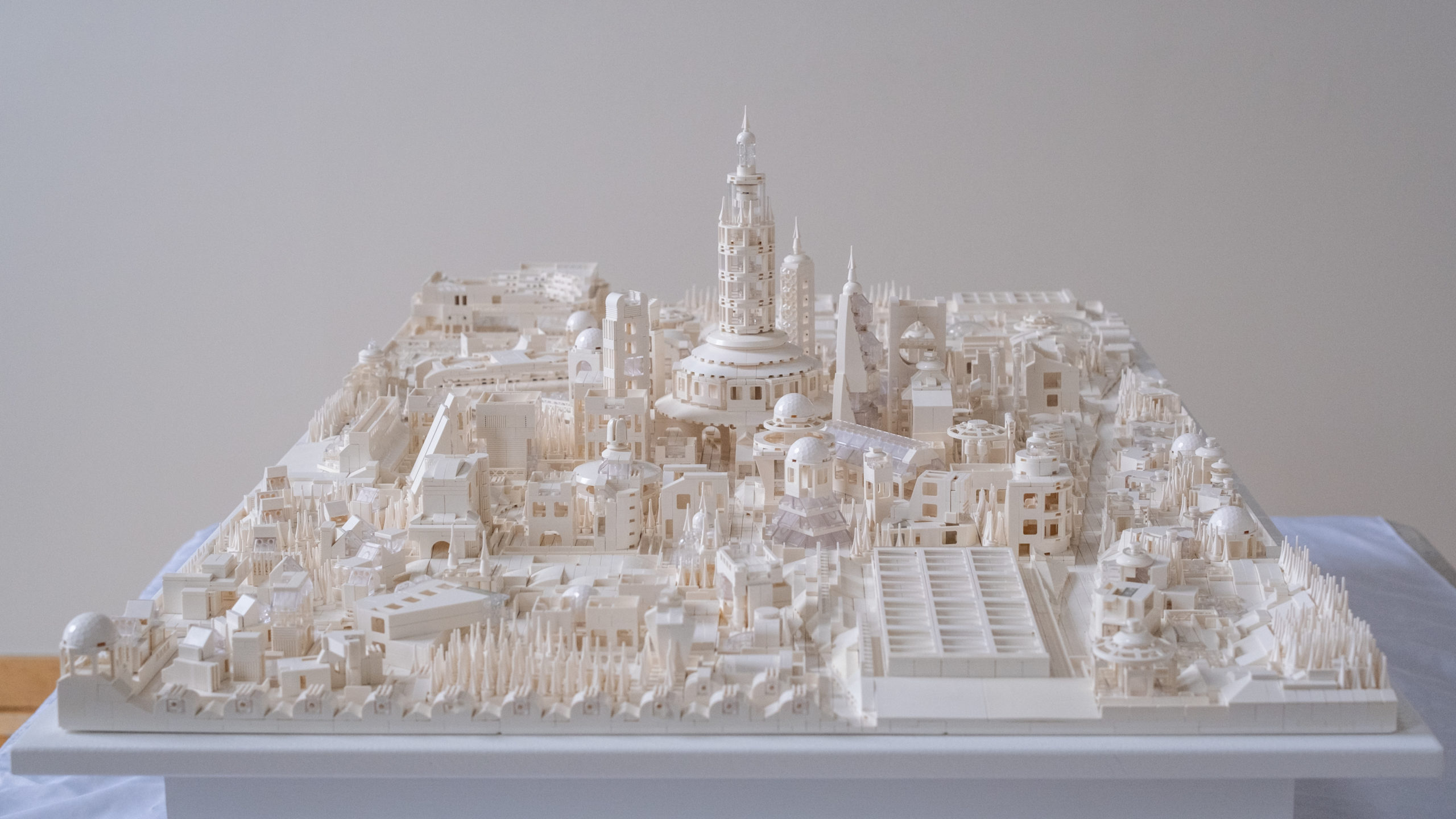
Nimako, a Ghanaian-Canadian internationally exhibiting artist whose work explores Black futuristic narratives, has been crafting LEGO sculptures since 2012 and uses the iconic medium to create pieces in various sizes and of various subjects using black LEGO bricks. His works have been displayed in museums and events from Canada to South Korea, including the stunning 8-foot-by-6-foot Cavalier Noir, which depicts a Black child riding a black unicorn. As his website puts it, Nimako’s “fluid building style, coupled with the Afrofuturistic themes of his work, beautifully transcend the geometric medium to embody organic and fantastical silhouettes.”
Visual and Performing Arts teacher Wendy Staples first put Nimako on the school’s radar. Visual and Performing Arts Department Head Natania Hume then discussed a possible Nimako residency with Staples more, and “we both thought it would be a great fit with our program and student body,” Hume said.
And that’s when the Grum Project helped seal the deal. The Grum Project, founded and funded by a generous Northampton School for Girls alumna, allows the school to establish min-residencies for artists. “The Grum Project allowed us to bring him here,” Hume said, “and we wouldn’t have been able to have him complete a residency and project without it.”
For his Williston residency, Nimako decided on the tabletop project for a few reasons. One was simply safety—all of the LEGO pieces would be contained and supported by the table. But the campus-building project also allowed Nimako to keep his “modified microscale” approach going.
“You are shrinking it down so that there are no people physically available on the artistic landscape, so you have to imagine [what it will look like],” Nimako said. “And the beauty of this technique, too, is that there are so many pieces with small openings, fissures, little gaps, that when you shrink down your thinking, they become windows and doorways that make it so much easier to construct a smaller structure.”
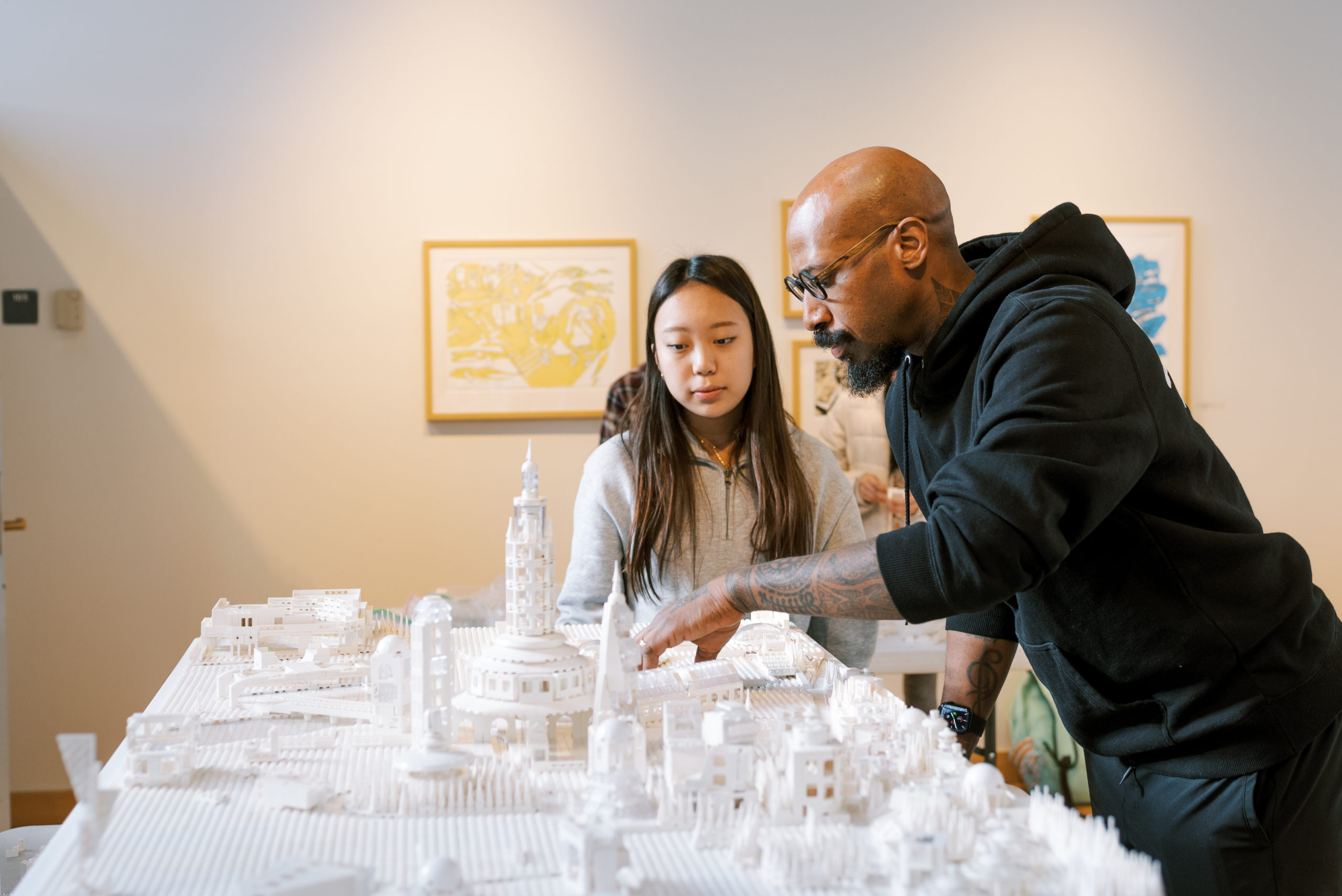
As for the all-white aesthetic, Nimako pointed to how futuristic cities are typically depicted in science fiction and fantasy genres.
“[The white blocks] are more about the message I’m conveying with this piece, and that’s based on previous historical examples of vintage science fiction and utopianism,” he said. “Whenever we’re talking about societies with high ideals and prosperity, typically the cities are constructed with a center spire paradigm with lighter, consistent colors, like all light gray or light white or something light blue, even, just trying to capture a lightness.”
Work on the project took three days—plus an all-nighter. Nimako and students first started working on the project on a Tuesday, with Nimako wrapping up the final details around 4 a.m. Friday morning. Along the way Nimako provided guidance to students building structures to add to the campus. Nimako challenged students to think in buildings that were 20 pieces or smaller, to really drive home the scale size he was going for.
Nimako praised the student builders for taking his instructions and building off of it. Creating with LEGO blocks is often a solitary hobby—Nimako’s own sculptures prove a perfect example—but for the Grum Project visit, everything created had to fit into a broader, inclusive creation.
“It’s not about going over here and making your own thing,” Nimako said. “It’s ‘OK, I’m going make a thing that’s going to be a part of this, so what will it take for me to include what I’ve built onto this thing?’ And some of them really adapted to that. … I found a way to make sure that everybody [got] to contribute something.”
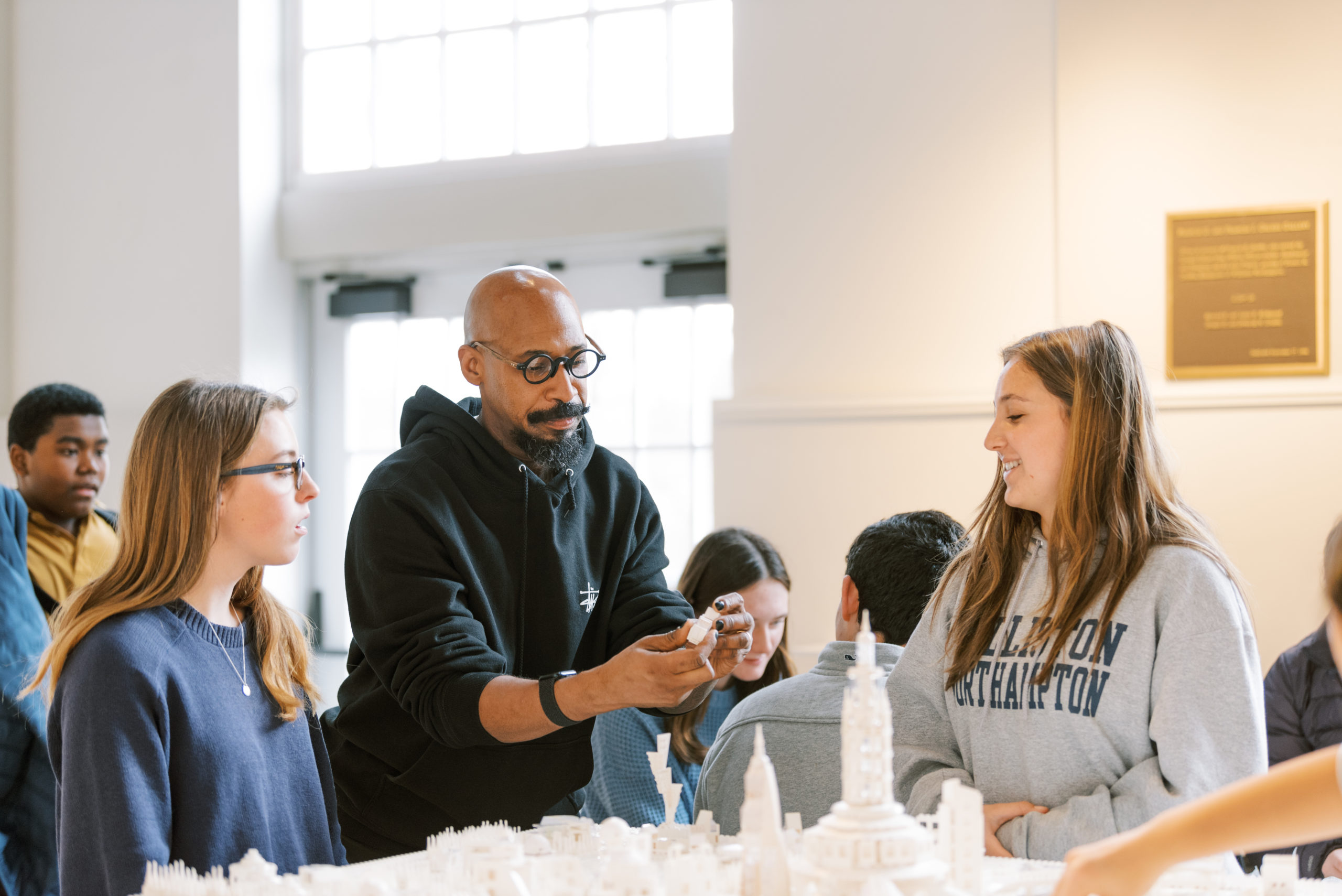
“He was great with the students and extremely personable,” Hume said of Nimako and his visit. “He was truly interested in our students and in their experiences. He was very encouraging to our art students and engaged students who are new to art making as well.”
Middle School
In addition to the larger project, Nimako also spent time in the Middle School doing a hands-on demonstration of his “Building Beyond” series, an Afrofuturistic LEGO workshop. Students used LEGO blocks—called a Vision Kit—to create one of four pre-designed figures.
As he told The Willistonian in an interview: “’Building Beyond’ is about looking into the future, but making sure that future is inclusive. I noticed that there was a real lack of sets or mini figures that catered to diverse communities.”
Presenting the work
The LEGO landscape will be on permanent display inside the Reed Campus Center for everyone to see. The exact location is still being decided, but the piece will be encased in plexiglass for preservation. Nimako also challenged the school to build a legend or key for the structure, to give reference to what was created.
“So many of you had ideas about what your structures are, and since you built a lot of the structures and it’s your campus, you should have a say as to what these building actually mean.”
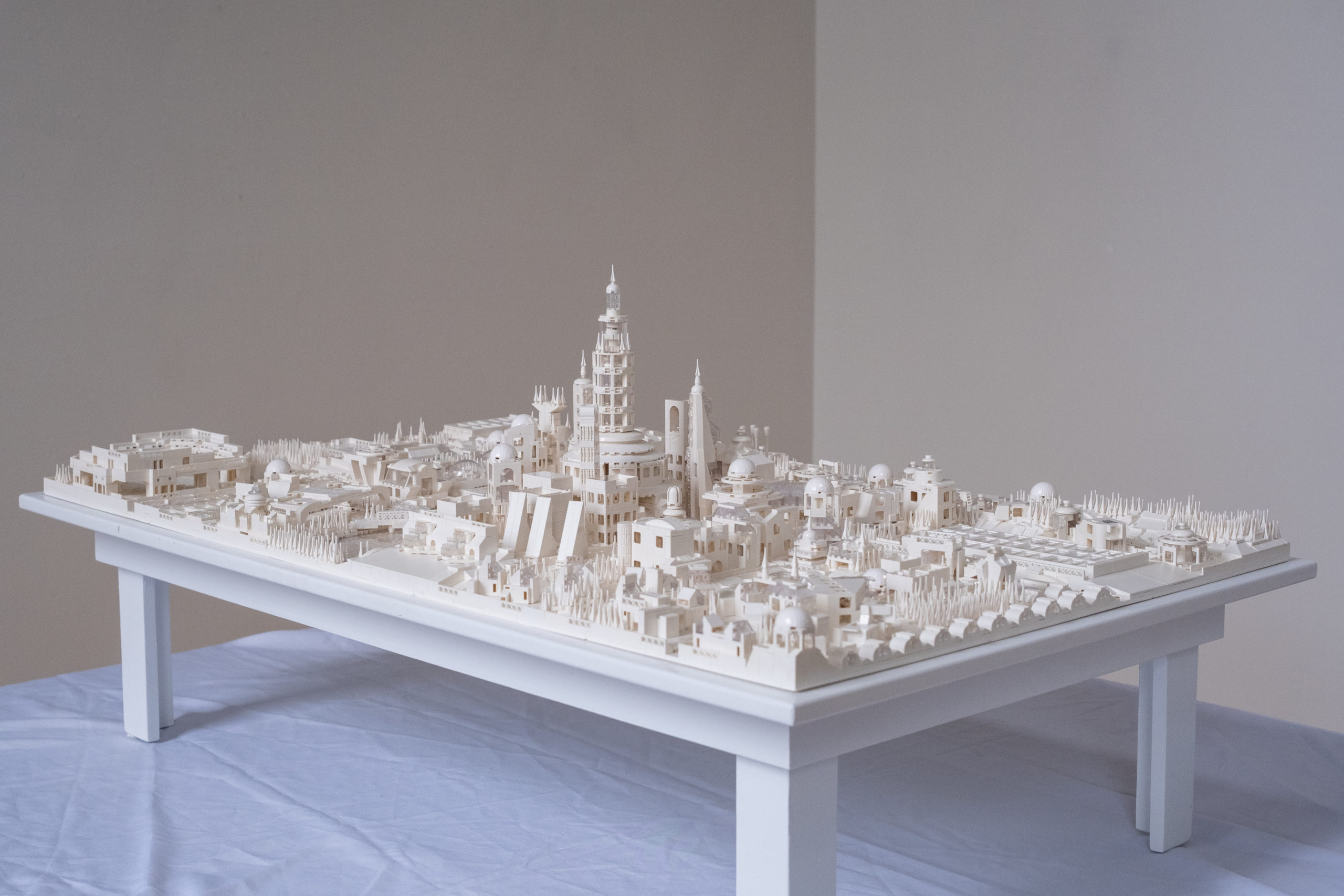
To see more photos from Nimako’s stay on campus, check out our Flickr gallery. Nimeko also posted a video from his stay on Instagram.

